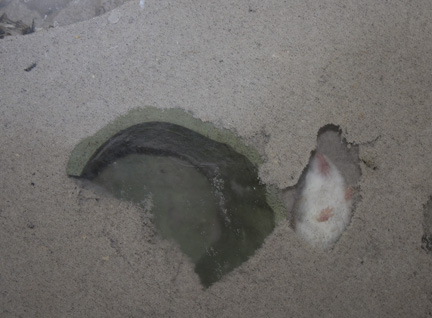
There are two new residents at the E.O. Wilson Biophilia Center, and they are cute as can be. Two federally endangered Perdido Key beach mice (Peromyscus polionotus tryssyllepsis), have arrived at the Center to join in on the Center’s educational programs.
Named Twix and Crunch, the two males have been in a captive breeding program by U.S. Fish and Wildlife Service and were used to help re-establish the population at Gulf State Park on Perdido Key in 2011. The Perdido Key beach mouse is a federally listed endangered subspecies of the oldfield mouse that reside in the dunes of Perdido Key, a small island located near Pensacola. When the population numbers dropped, the mice were taken into captivity, and a breeding program was established at the Brevard Zoo in Melbourne, FL, Santa Fe Teaching Zoo in Gainesville, FL, and Palm Beach Zoo in West Palm Beach, FL.

Now, semi-retired, several of the aging captive bred mice were brought to various educational facilities throughout the state to educate the public on their plight and live out the remainder of their lives. The E.O. Wilson Biophilia Center is the new home for Twix and Crunch.
“By protecting the mouse, you are protecting people too,” said Bob Walker, educator at the Center as he explained the importance of protecting our primary dune systems along our beaches.
The mice are nocturnal, so visibility will be limited during daytime hours. The Center plans on using videos and photos of the mice as educational tools.

Twix and Crunch reside in a large glass tank and enjoy burrowing around small branches in the sand that replicate root systems. The mice enjoy a diet of seeds, fruit, and insects that are commonly found in our sand dunes. They also enjoy a spinning wheel provided for exercise.
About the beach mouse:
As the result of loss of habitat over the years, different sub-species of the oldfield mouse (Peromyscus polionotus) have developed along the Florida Panhandle coastline. The local Panhandle sub-species are: the Perdido Key beach mouse, Santa Rosa Island beach mouse, Choctawhatchee beach mouse and St. Andrew’s beach mouse.
